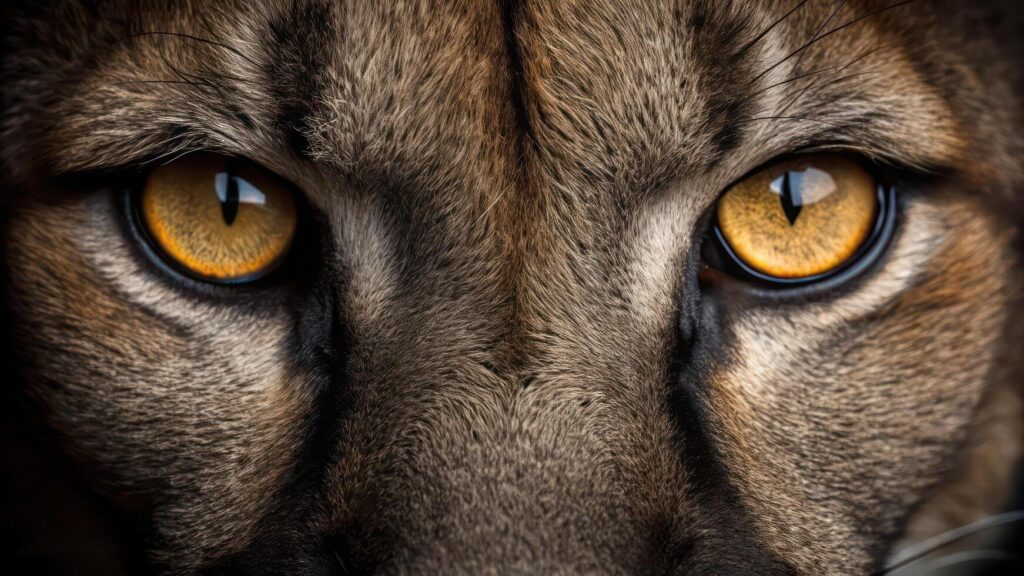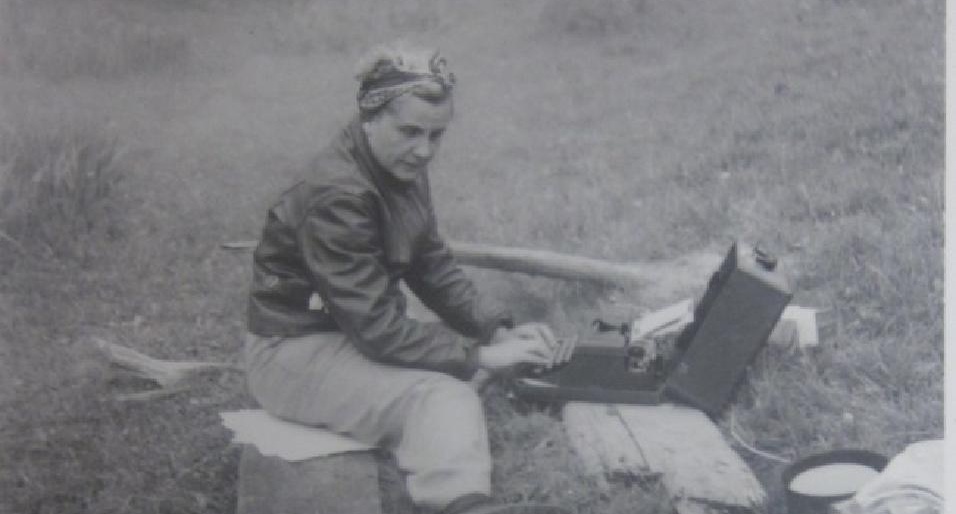Post Category : Field Life Women in Archaeology
Mary Vaux Walcott
International Women's Day
To celebrate International Women’s Day (March 8th, 2022), I want to share the accomplishments of Mary Vaux Walcott (1860 – 1940).
Early Life
Mary Vaux was born into a prominent Quaker family in Philadelphia on July 31, 1860. She was the eldest of the Vaux’s three children. The Quakers valued the devotion to God, modesty and the pursuit of knowledge. So even though Mary was a woman, she was encouraged to pursue scientific knowledge. Due to the early death of her mother, the running the household fell to Mary and she was unable to attend university. But that didn’t stop her from going after her passions. These included watercolours, scenic photography, mountaineering, glacial studies, geology, and passing her knowledge to others.
Passion for the Great Outdoors
Above all else Mary valued the outdoors. he once wrote “escape from brick walls and city streets is the most desirable thing to do in the world.” She had a passion for the mountains and her first climb was Mount Abbot (2466 m summit) on July 25, 1897. She was the first documented woman in Canada to ascend a mountain over 3050 m high. She climbed Mount Stephen (a 3199 m summit) in the Kicking Horse River Valley of Yoho National Park on July 21 1900.
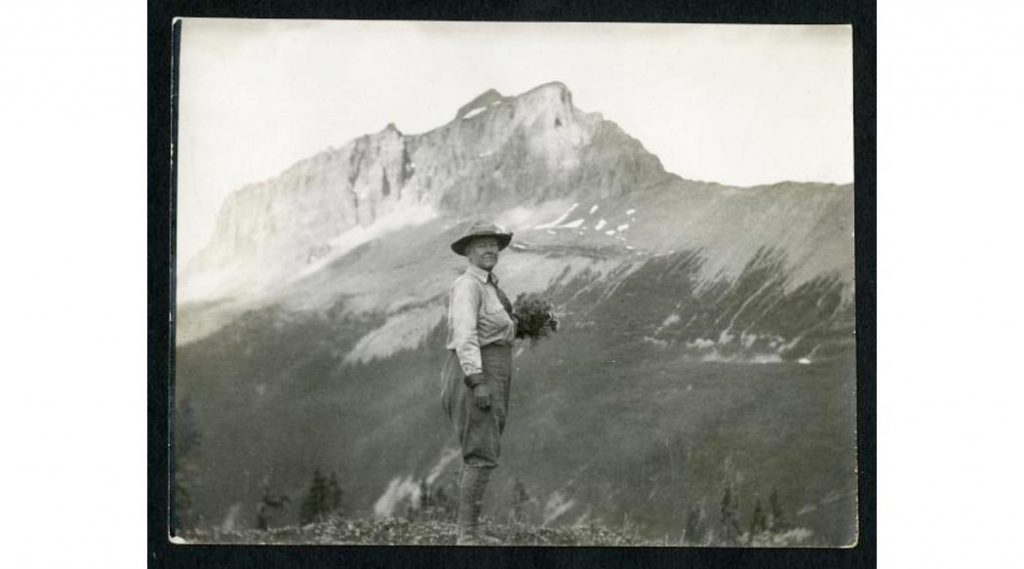
Mary Vaux Walcott, holding wild flowers in Canadian Rockies, c. 1920s, Smithsonian Institution Archives
Inspired by Nature
Mary was constantly seeking new vistas and places to travel. She was on the forefront of women who sought excitement and fulfillment through exploring the outdoors. She often took photographs of the landscapes she encountered during her travels. In 1887, her brother William noticed differences between a glacier in the Selkirk mountains and the pictures Mary had taken three years earlier. This observation sparked the family to begin the first glacial studies in Canada.
In 1914, at the age of 54, Mary married Dr. Charles Doolittle Walcott, the then secretary of the Smithsonian Institution on Washington, D.C. He was a scientist, paleontologist and a leading authority on Cambrian geology and fossils. In 1909, he discovered the Burgess shale deposit on Mount Wapta, British Columbia. Mary and Charles shared a passion for the outdoors, exploring, and enjoyed traveling together. They frequented Banff, Lake Louise, Yellowstone National Park, the Grand Canyon, and Yoho National Park. Mary was a remarkable woman and her name lives on through a landmark, Mount Mary Vaux, a 3,208 m summit located in Jasper National Park.
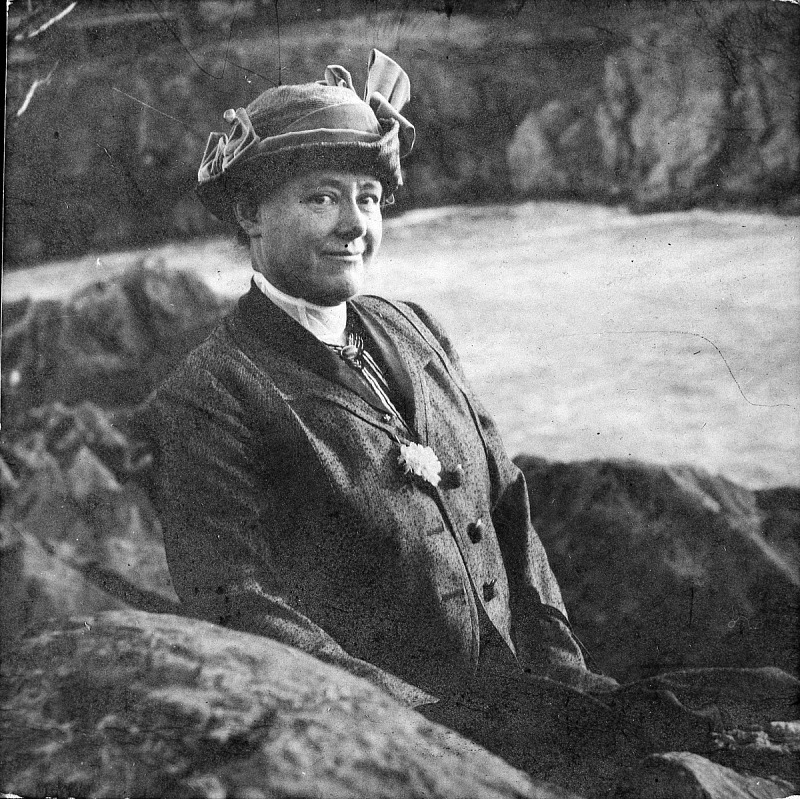
Portrait of Mary Vaux Walcott, holding wild flowers in Canadian Rockies, c. 1914, Smithsonian Institution Archives
Mary’s involvement in scientific pursuits was a milestone at the time when women were often discouraged from such activities. Mary and her husband Charles promoted the public understanding of scientific research. She gave lectures on botany and photography for crowds of up to 3,000 people. She and her husband established a research fund for the development of geological and paleontological studies and publishing results thereof called “the Charles D. and Mary V. Walcott Research Fund”. This fund is still in existence today.
Life is Art
As a talented artist, Mary painted over 1000 watercolours of wildflowers. The Smithsonian Institution first published her paintings in 1925 in a five-volume set titled “North American Wildflowers.” It contained 400 reproductions of her paintings along with her one page descriptions of each. These descriptions included scientific data, interesting facts, medicinal uses, poetic references, and sometimes the circumstances surrounding the painting of the wildflowers.
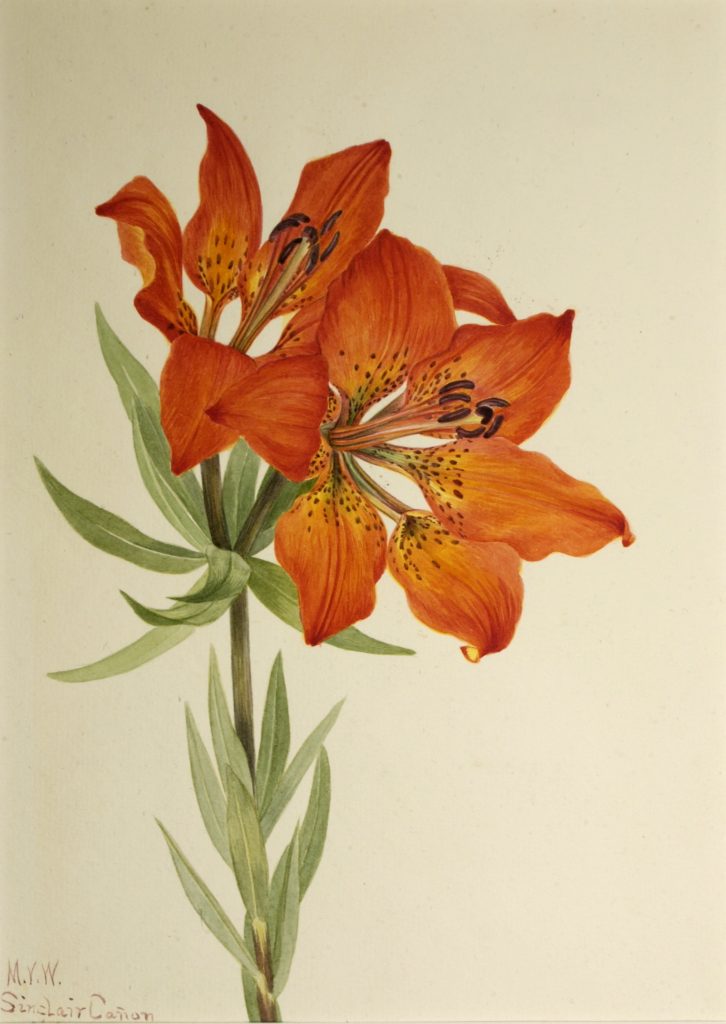
Mary Vaux Walcott, “Red Lily (Lilium montanum)” watercolour 1923. Smithsonian American Art Museum.
An Inspiration to All
One of Mary’s final achievements was that she succeeded her brother George on the Board of Indian Commissioners in 1927. She remained on the board until its dissolution in 1933. Board members traveled on inspection tours to multiple reservations and later advised the Department of the Interior and Congress on Indian Affairs. During this time, she visited over 100 reservations. Her writing expresses concern and compassion for the First Nations peoples that she encountered.
To conclude, I leave us with one last quote from Mary: “I don’t know why it is. Women have time for bridge parties and dances, yet they miss so much by not turning their attention to scientific studies and using their eyes. There is a thrill one receives from breaking a rock and finding a fresh fossil that nothing else can give. There is the romance of not knowing what one will find.”
A woman after our own hearts.

